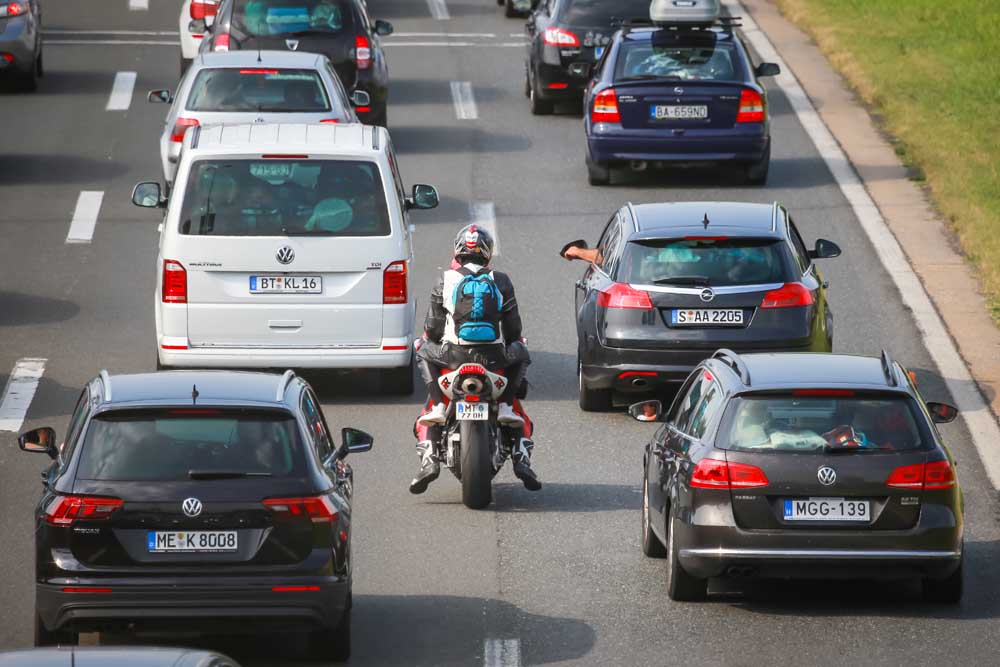Motorcycle lane-splitting bill reignites a debate over concern for safety
Published 12:00 am Friday, February 22, 2019

- A motorcycle rider splits the lanes while riding in heavy traffic in Zagreb, Croatia, on Aug. 11, 2018. Oregon lawmakers have supported lane splitting.
A proposal to allow motorcyclists to ride between lanes past stop-and-go traffic on Oregon highways and freeways is back in the spotlight in Salem.
The Joint Committee on Transportation held a public hearing on the so-called lane-splitting bill Wednesday night. A similar bill passed the Senate in the 2015 legislative session before dying in a House committee.
Proponents said the 2019 version is the same, but this year, they returned armed with significantly more legislative support. Nineteen lawmakers — from Grants Pass Republicans to Portland Democrats — are sponsoring the 2019 bill. Just six lawmakers sponsored legislation in 2015 and 2017. A 2017 Senate bill died in committee.
Supporters point to a 2015 University of California-Berkeley study that found lane-splitting could be safe if motorcycle riders don’t exceed the speeds of adjacent traffic by more than 15 miles per hour. California is the only state in the country where it’s legal for riders to skirt through clogged traffic. Utah is considering a lane-splitting bill.
Bill supporters say there’s growing momentum across party lines that lane-splitting can be safe for road users and helps reduce congestion.
“We have been building relationships,” said Paula Leslie, legislative director for the motorcycle advocacy group Bike Pac of Oregon. “We have been spending a lot of time with our legislators.”
Despite having a diverse coalition of new supporters in and outside the Portland area, the bill appears to face an uphill fight, however.
The Oregon and Portland transportation departments are opposing the idea, which would allow motorcycles or mopeds to drive past congested traffics at speeds of up to 20 miles per hour. The law would apply to any highway or freeway with speed limits of 50 miles per hour or greater. It would be effective when traffic has slowed to 10 miles per hour on those roadways.
Opponents say the law would be unenforceable and could lead to motorcyclists flying through travel lanes at high speed. They expressed concern about rear-end crashes, or cars or trucks changing lanes and striking a motorcyclist.
Dylan Rivera, a Portland Bureau of Transportation spokesman, said the city has “significant concerns” about the proposal.
“Over the past few years, motorcycle crashes in Portland have continued to increase steadily,” Rivera said. “If lane-splitting becomes legal on state highways, we are concerned that it would spill over to city streets — especially since the bill does not include any way to educate the public about this change.”
Seventy-seven motorcyclists died in 2018 statewide, up from 54 in 2017. In Portland last year, motorcyclists accounted for more than one-quarter of the 34 traffic fatalities.
Troy Costales, Oregon Department of Transportation safety administrator, testified against the bill Wednesday night. Costales said the state saw 3,081 crashes involving motorcycles between 2015 and 2017, including 168 deaths and 2,610 injuries.
Of those deaths, 12 involved rear-end crashes, with nine of those involving a motorcyclist striking a vehicle from behind. Sixteen percent of motorcycle injuries involved rear-end crashes, with the majority caused by the motorcyclist striking a car.







